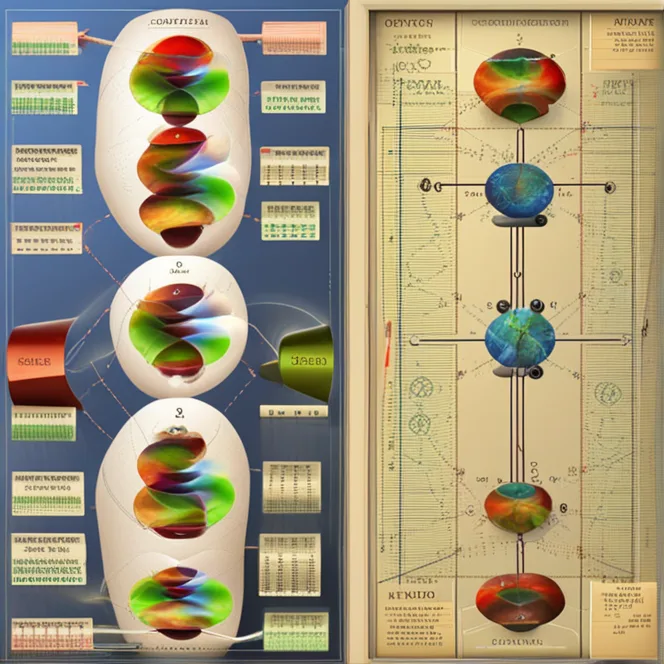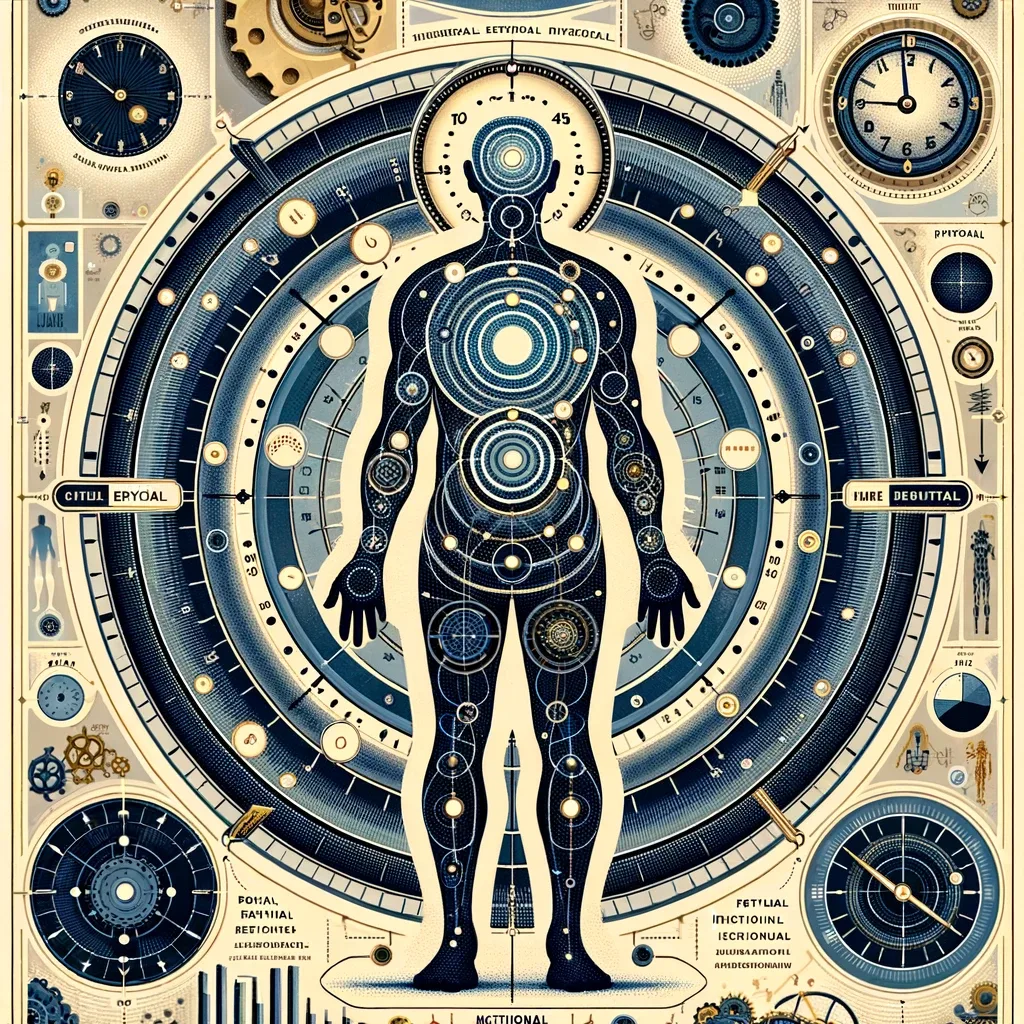
The Pulse Of Existence: The Patterns Of Biorhythms
Explore the concept of biorhythms, the belief in natural body cycles affecting physical, emotional, and intellectual well-being.
article by Adrian Wallace
What Are Biorhythms?
Biorhythms refer to the notion that our daily lives are significantly affected by rhythmic cycles. Believers in biorhythms assert that human existence is influenced by natural physiological cycles. These cycles are said to regulate various aspects of an individual's physical, emotional, and intellectual capacities. According to the theory, understanding and tracking these biorhythmic patterns can lead to heightened self-awareness and the ability to predict periods of strength or vulnerability within those different areas of life. This concept, while not grounded in mainstream science, has found a niche following among enthusiasts looking for personalized insights into their wellbeing.
The Origins of Biorhythm Theory
The concept of biorhythms dates back to the late 19th century, spawning from the work of Dr. Wilhelm Fliess, a colleague of Sigmund Freud. Fliess believed in bodily cycles of 23 and 28 days governing physical and emotional well-being respectively. Later, Dr. Hermann Swoboda and Alfred Teltscher further developed this theory, introducing the idea of a 33-day intellectual cycle. The intersection of these cycles is purported to have effects on a person's abilities and experiences, influencing their reactions to various situations. Over time, these ideas have evolved into a broader interpretation of periodic cycles affecting human behavior and physiological states.

Understanding the Three Main Cycles
The theory of biorhythms centers around three primary cycles: the physical, emotional, and intellectual cycles. The physical cycle, lasting 23 days, influences stamina, coordination, and strength. The emotional cycle spans 28 days and impacts mood, creativity, and perception. Finally, the intellectual cycle, every 33 days, affects analytical thinking, learning ability, and communication. Proponents claim that by charting these cycles, one can better understand their personal highs and lows, potentially leveraging the positive phases and exercising caution during the negative ones. Critics, however, argue that these claims lack scientific evidence.
Charting Biorhythms
Charting one's biorhythms involves calculating the cycles from the date of birth to determine their current phase: high, low, or critical days. These phases purportedly influence a person's competence and well-being. High phases indicate increased ability, while low phases may suggest a decrease. Critical days, occurring when a cycle transitions from high to low or vice versa, could be seen as periods of instability. A variety of online tools and software can assist individuals with these calculations, providing personalized biorhythm charts that enthusiasts use for planning activities or making decisions.

Skeptics and Scientific Scrutiny
Despite a dedicated following, biorhythm theory has been met with skepticism and is not supported by empirical evidence from the scientific community. Critics argue that the theory lacks a biological basis and overlooks the complexity of human behavior and physiological processes. Studies conducted to validate biorhythms have yielded inconclusive or negative results, further casting doubt on the authenticity of these cyclic predictions. As such, it remains classified among pseudosciences, where claims cannot be substantiated by rigorous scientific methodologies.
Biorhythms in Modern Times
Today, interest in biorhythms persists, encapsulated by a subculture seeking to integrate these rhythms into their daily living. People use biorhythms for various reasons: to anticipate critical life events, improve personal relationships, enhance performance, or simply as a form of entertainment. While still far from the scientific mainstream, the fascination with biorhythms illustrates a broader human curiosity about life's patterns and the desire to find rhythm and reason in the complexities of existence.
Published: 12/11/2023
Modified: 12/11/2023
More predictions
Come back here soon to learn more about yourself and your future


Understanding Human Biorhythms
Explore the fascinating concept of biorhythms to understand the natural cycles that influence human physical, emotional, and intellectual states.


Deciphering Your Biorhythm Chart
Learn the essentials of interpreting a biorhythm chart for insights into your physical, emotional, and intellectual cycles.